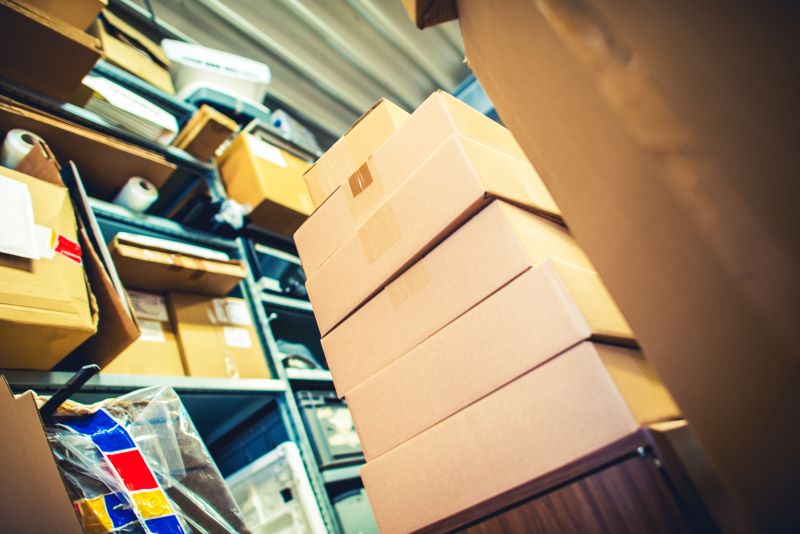In a 2022 survey, Invesp found that 79% of consumers want free return shipping from retailers, and 67% look at the returns policy before making a purchase in the first place.
The issue, of course, is that returns are expensive for retailers and ecommerce companies – both in the cost of shipping back to the warehouse and in employee or 3PL contractor time spent processing those returns. And those aren’t the only potential roadblocks making your returns process a massive headache, rather than a potential customer loyalty boost.
Here are a few of the biggest returns management challenges, and how you can keep them from taking over.

Challenge 1: Lack of Infrastructure
Many retailers lack the storage and staging space to effectively manage returned products, creating a huge bottleneck – especially during peak season and other busy times. Without enough space, warehouse teams have to figure out how to stuff inventory and returns into already overstuffed spaces.
This, of course, presents a major opportunity for you as a 3PL, as you can provide those retailers the scalability they need to hold outgoing inventory and process incoming returns efficiently. Adding a robust returns management system to your toolkit gives you an even bigger edge in the eyes of retailers trying to process both outgoing and incoming orders more efficiently.
Challenge 2: Return Tracking
This challenge isn’t just about tracking a shipment, though that’s part of the process. It’s also about tracking that return from your customer’s hands through processing at the warehouse and on to its final disposition – whether that’s resale, donation or disposal. Finally, you need to create actionable reports that help your retail partners spot opportunities for performance improvements. Let’s look at each piece of the process.
Return shipping tracking: Offering customers a printable return label with tracking information cuts out a lot of “where’s my refund” calls. Not only will you know exactly when to expect that return, the customer can see when you’ve received it and when their refund should come through.
Return processing: Once the item makes its way back to your warehouse, you need to figure out what to do with it. You should have a defined process with your retail partner to outline return categories and quickly decide whether a product goes back into inventory, into a refurbish program, gets donated, etc.
Reporting. In a reactive returns process, reports may just consist of the number of returns and the disposition of each. But in order to cut down on future returns, your retail partners need proactive data. What was the reason for each return? How many fraudulent returns did you uncover? How many products did you have to dispose of, and why? Would returnless refunds make more sense for those?
Big tip for improving your return tracking and processing? Choose the right software that gives you fully guided workflows and comprehensive, easy-to-read reports.
Challenge 3: Customer Experience
While retailers may be tempted to focus on the cost of returns, their customers only care about how it affects their experience with the brand. Make the return process too complicated or cumbersome, and some customers won’t ever come back.
Retailers who nail the return process use several different tactics to make their customers happy. Making the return process simple to understand and easy to complete is an important step. Another is offering different options for returning items, such as printable shipping labels with scheduled pick-up or allowing in-store returns for items bought online.
Comprehensive reporting is important here, too. Understanding a customer’s reasons for returns helps retailers spot trends they can fix to minimize future returns. For example, if customers frequently return apparel due to incorrect sizing, the retailer can update product descriptions and sizing instructions to help customers make better purchase decisions.
Challenge 4: Combating Returns Fraud
As in every aspect of commerce, fraudsters keep getting more creative in the ways they scam businesses out of money and/or goods. Whether it’s returning a counterfeit item in place of the genuine article, ordering an outfit to wear out once and return or another trick, fake returns can add up to huge costs for a business. The National Retail Federation estimated that in 2022 alone, 10.7% of returned online purchases ($22.8 billion) were fraudulent.
Spotting and preventing fraud can be tricky, but with a strong collaboration with your retail partners, you can save them potentially massive losses. Establish criteria for spotting fakes, educate employees about potential fraud, and identify the products most likely for fraudsters to target.
Efficiently processing returns helps you save your retail customers both time and money – and is a lot easier if you have a robust software platform to rely on. If you’ve been reluctant to get into returns processing in your 3PL due to the complexity, we get it. Get in touch today for a free demo of Octolan’s powerful tools that help you increase productivity, spot fraud and boost revenue.